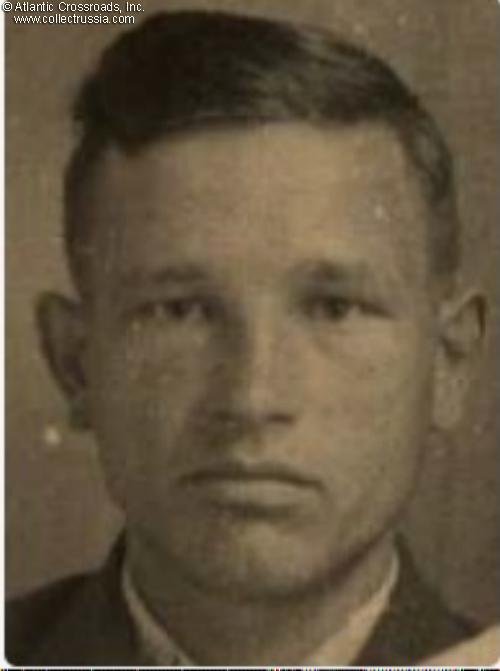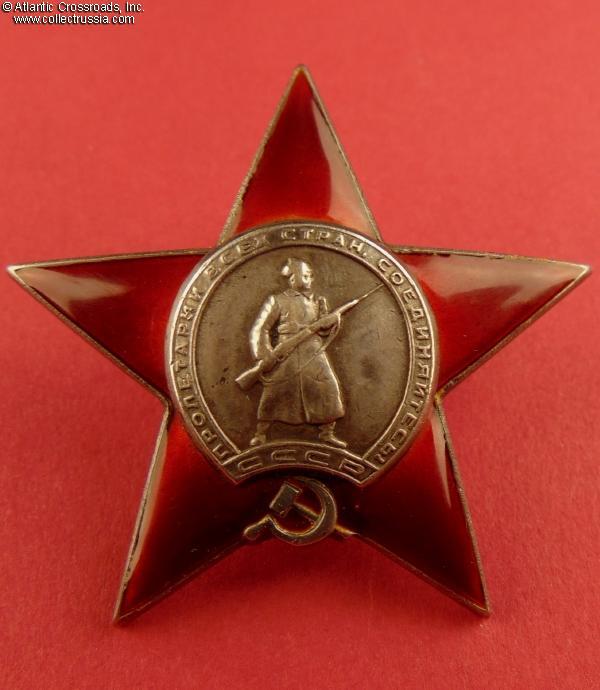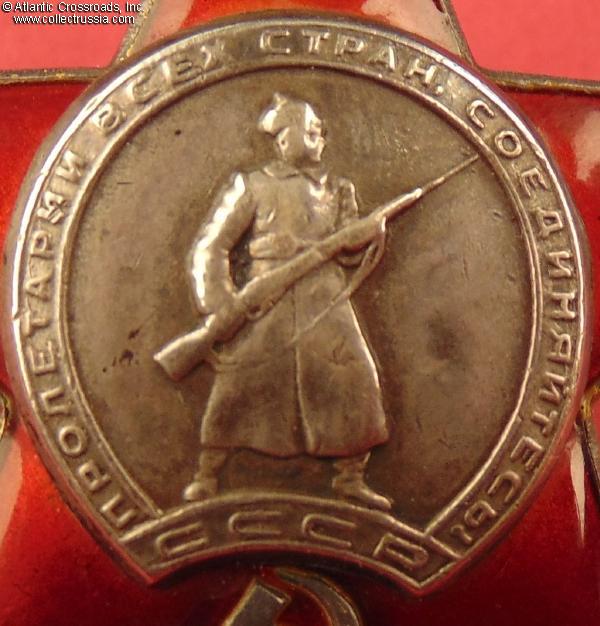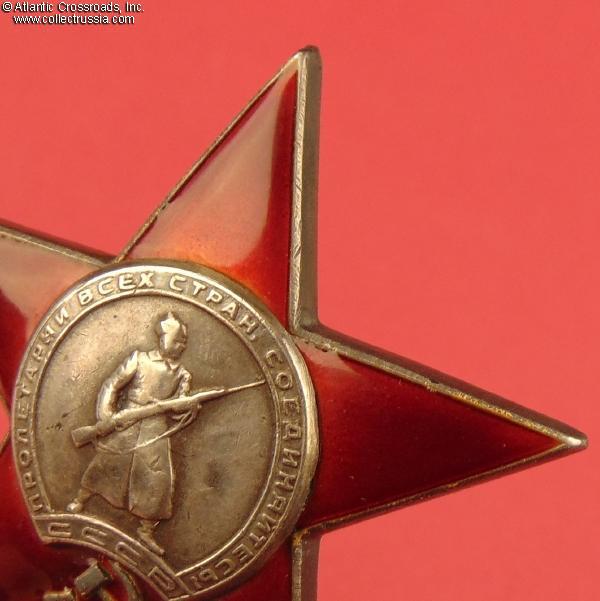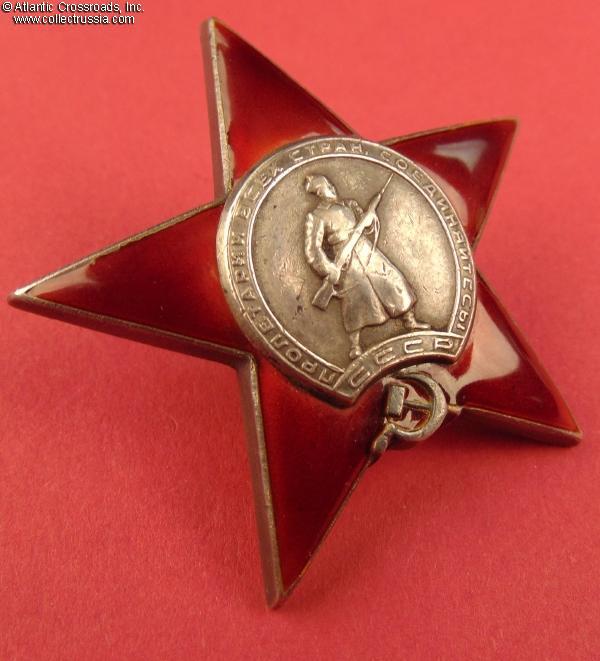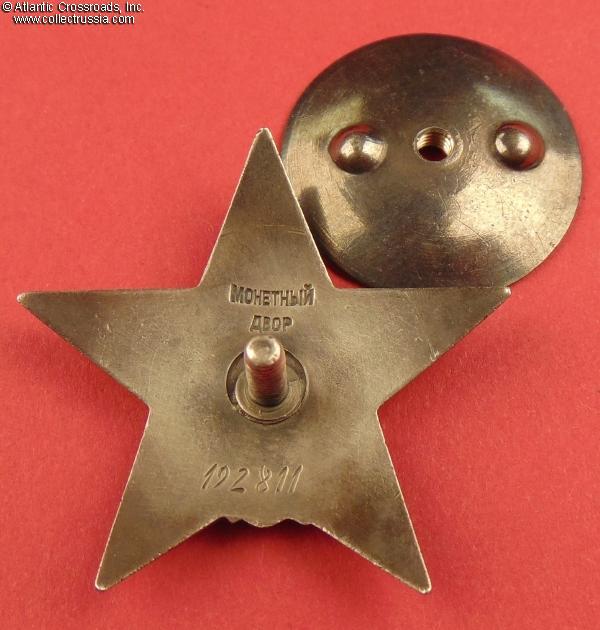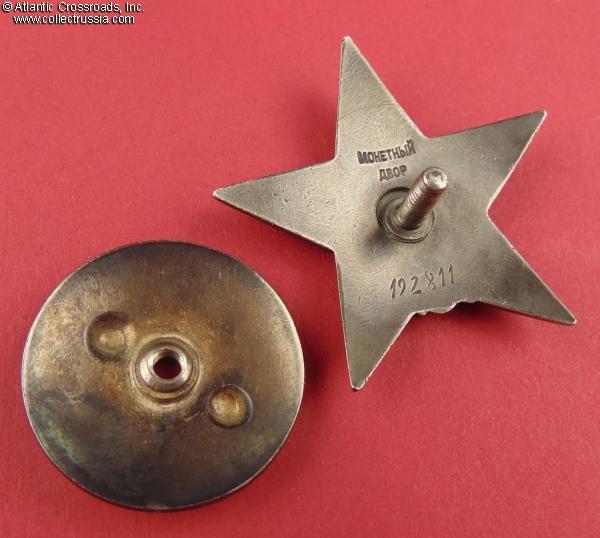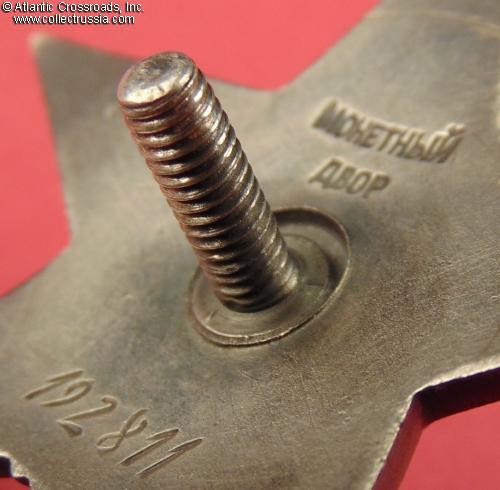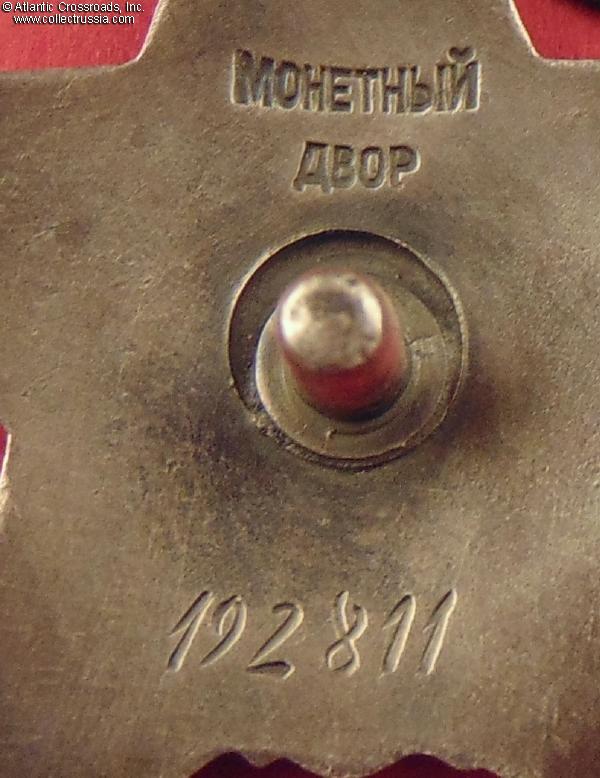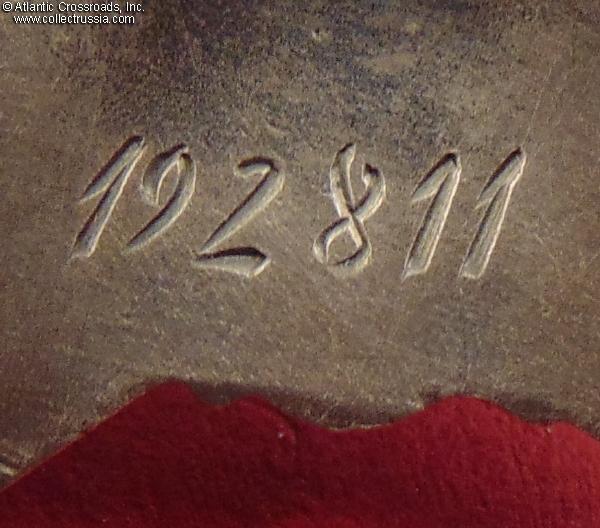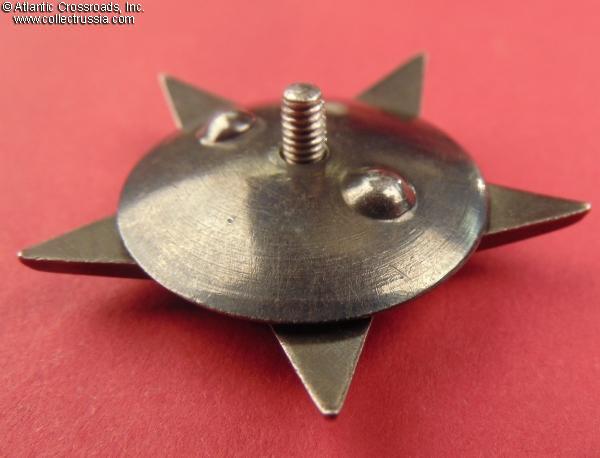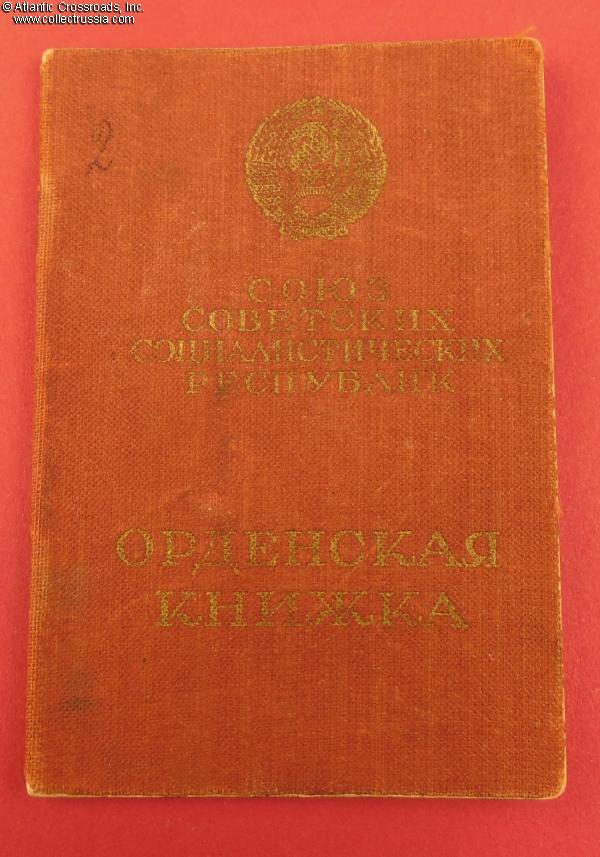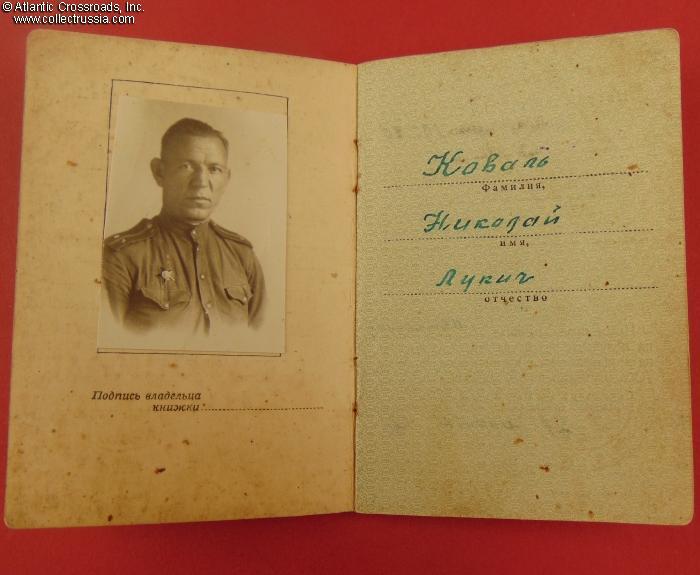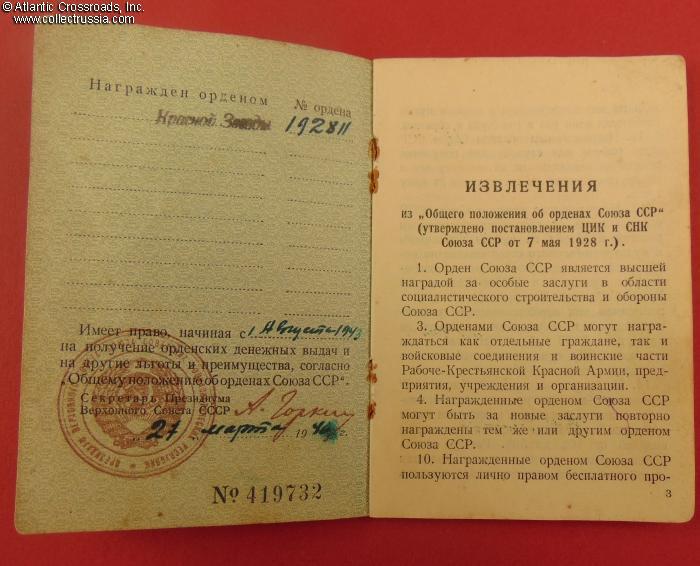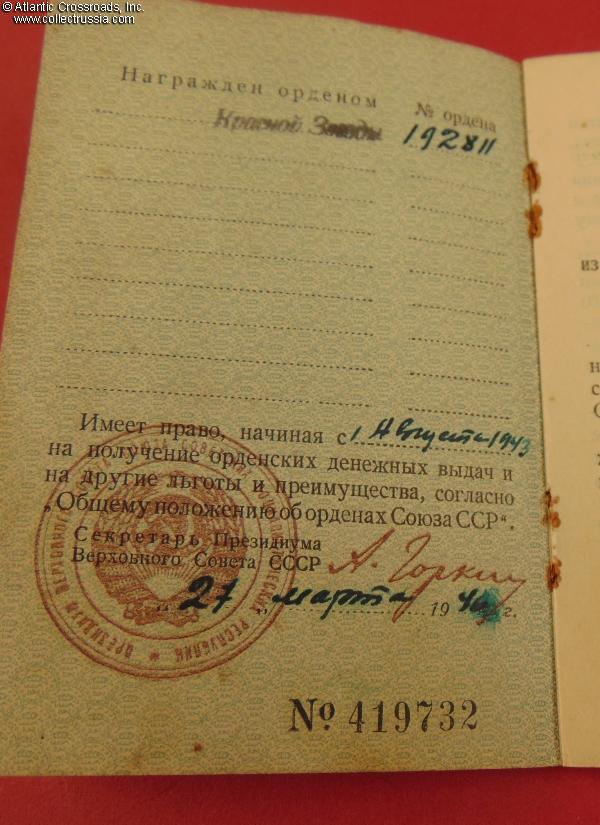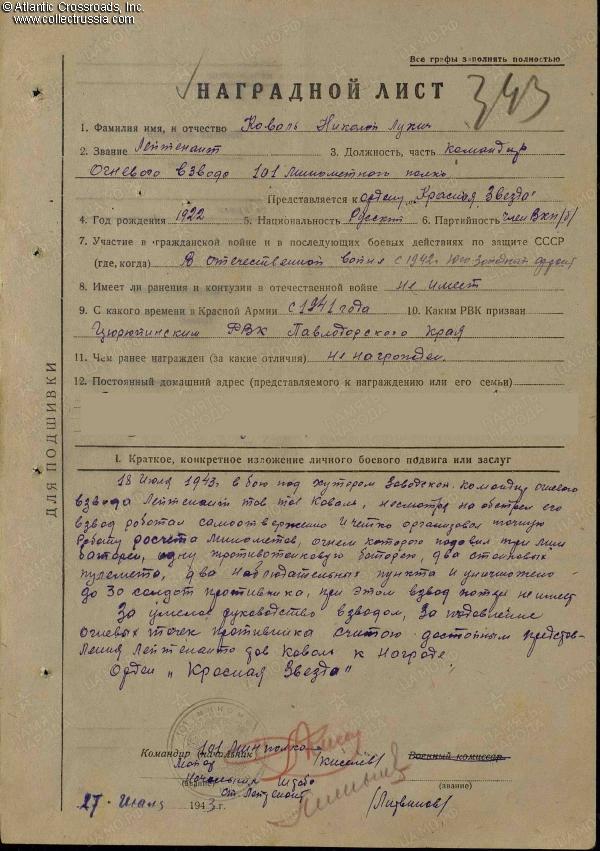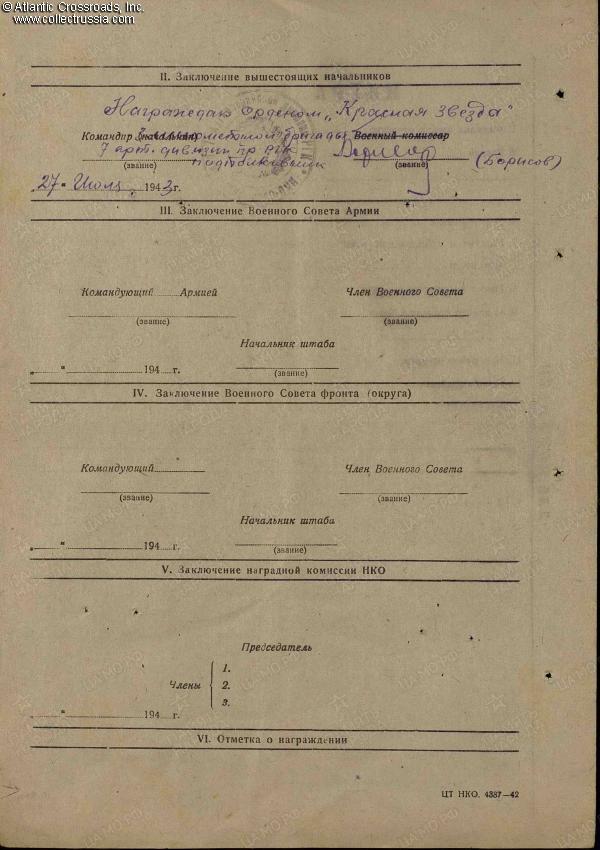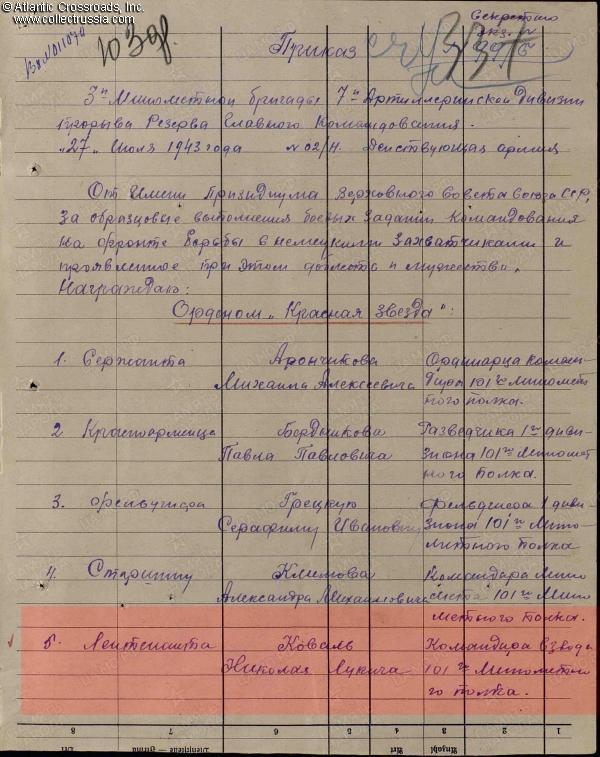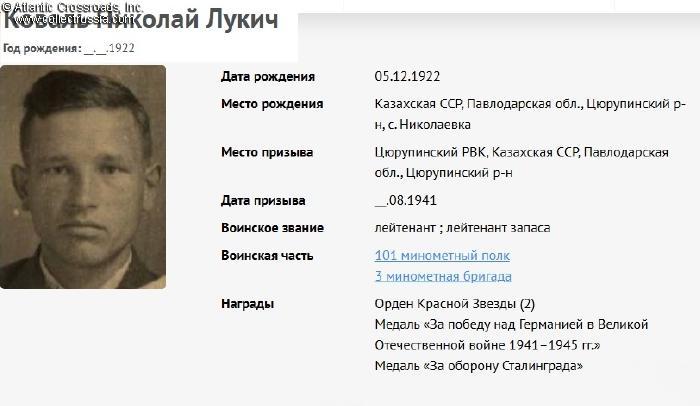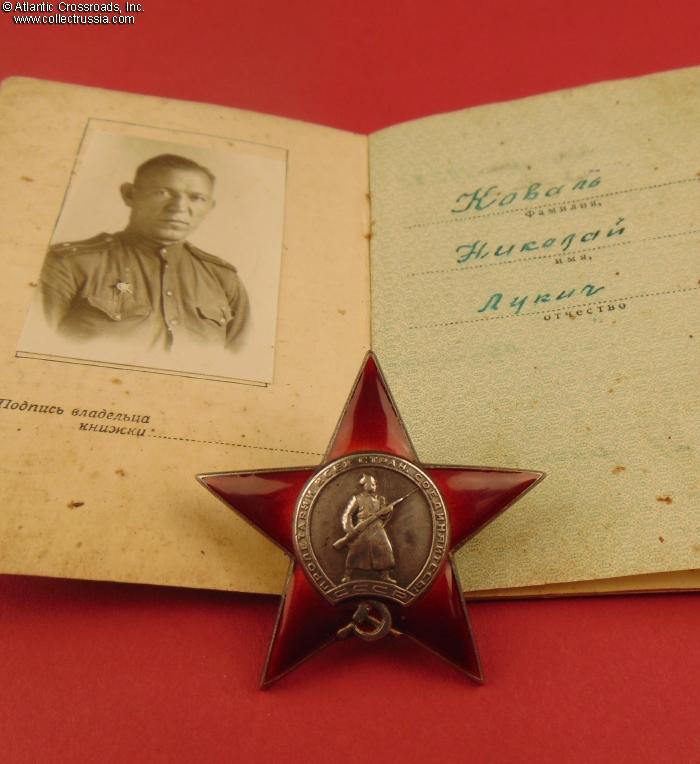
Order of the Red Star, Type 4 Variation 3 (with a screw post base), #192811, awarded on 27 July 1943 to Lieutenant Nikolay Koval (Николай Лукич Коваль), mortar platoon commander of the 101st Mortar Regiment, 7th Breakthrough Artillery Division of the Supreme Command Reserves, for outstanding leadership during the July 1943 Soviet offensive in the Donbass region which coincided with the Battle of Kursk.
The order is in silver and enamels; measures 46.3mm in height x 48.2 mm in width; weighs 28.5 g without the screw plate. This specimen was manufactured in 1943 at the Moscow Mint. Features screw post base and slightly curved up mint mark. The mint mark has a dash over the last letter in the word "Monetnyi". The screw post base is "sunk in" below the surface of the reverse. The enamel is of slightly lighter shade of red and noticeably finer quality than the more recent issues. /N. Strekalov, V. Durov, The Order of the Red Star, pp. 230, 231/.
In excellent condition. Th
The order is in silver and enamels; measures 46.3mm in height x 48.2 mm in width; weighs 28.5 g without the screw plate. This specimen was manufactured in 1943 at the Moscow Mint. Features screw post base and slightly curved up mint mark. The mint mark has a dash over the last letter in the word "Monetnyi". The screw post base is "sunk in" below the surface of the reverse. The enamel is of slightly lighter shade of red and noticeably finer quality than the more recent issues. /N. Strekalov, V. Durov, The Order of the Red Star, pp. 230, 231/.
In excellent condition. The enamel is literally perfect: it shows a magnificent luster and is free of any wear that could be found even under a 10x magnification. The center medallion has a few minuscule dings and a minimal amount of wear to the high points; its raised details are very well preserved and crisp. The reverse is essentially pristine. Both sides show a very attractive dark patina to silver. The screw post is full length, approx. 11.5 mm measured from its base, and comes with an original silver screw plate. Overall, an extremely attractive and well-preserved example of a mid-war Order of the Red Star.
The Order Booklet #419732 was issued on 27 March 1947 and contains a record of only a single award, the Order of the Red Star - making this essentially a "complete group". The starting date for the special privileges is 1 August 1943, corresponding with the July 1943 date of the award. Unlike most order booklets issued after the war, there is a photo of the recipient proudly wearing his Order of the Red Star on an M43 gimnasterka shirt with lieutenant's shoulder straps. Although the photo has no stamp and was probably added by the recipient on his own volition, it is without a doubt a completely legitimate photo of the recipient - i.e. not one of those cases when a random photo was added to the document to enhance its market value. This is proven by a different photo of him shown on one of the Russian archival websites, clearly showing the same person. Note that the photo in the document was probably taken no later than in 1945, judging by the fact that the recipient was still on active duty at that point, but had not yet received the Medal for Victory over Germany.
Just like the award, the document is in excellent condition. The exterior shows almost now wear; the binding is tight. There is a numeral "2" inscribed on the cover in fountain pen for unknown reasons, not too noticeable or detractive. The internal pages are overall clean and crisp, having only a minimal age toning and foxing. The digit "6" in the date of issue got slightly blurry due to a water drop, but it is still completely legible.
Nikolay Koval was born in 1922 in an ethnic Russian family in a village of the Pavlodar region of Kazakhstan. In the Red Army from August 1941, he was on the front lines starting from 1942 and took part in the Battle of Stalingrad. As of the summer of 1943, Koval had the rank of lieutenant, serving as a mortar platoon commander with the 101st Mortar Regiment, 3rd Mortar Brigade, 7th Breakthrough Artillery Division of the Reserves of the Supreme Command.
In July 1943, Koval's division was deployed in support of the 8th Guards Army of the Southwestern Front during its attack across the Severskiy Donets River. The offensive, conducted jointly by the forces of the Southwestern and Southern Fronts, was later dubbed the Izyum- Barvenkovo Operation by Soviet historians. It had ambitious goals of totally dislodging the southernmost anchor of the German Army Group South, enveloping the German I Panzer Army and VI Army (the latter reconstituted after the Battle of Stalingrad), and clearing much of the Donbass coal mining region.
On July 17, the 8th Guards Army successfully crossed the Severskiy Donets southeast of the city of Izyum and, spearheaded by the tank forces, pushed into the German defenses on the west bank. On 18 July, the second day of the operation, Koval's platoon was engaged in heavy fighting near the hamlet of Zavodskoy. Despite an intensive incoming fire, Koval and his men in just a single day neutralized three mortar batteries, one antitank artillery battery, and two heavy machine guns, killing up to 30 German soldiers. On 27 July Koval was recommended for the Order of the Red Star in recognition of his masterful command qualities demonstrated in action at the beginning of the operation. The recommendation of the regiment commander was immediately approved by the command of the 7th Artillery Division, which officially bestowed the award on the same day. By that time, the Soviet offensive had already stalled, and by the end of the month the Izyum-Barvenkovo Operation would be over. It had achieved only very modest territorial gains and failed in most of its far-reaching goals, such as the liberation of Stalino (now known as Donetsk), the key city of the Donbass Region. It had succeeded however in preventing the Germans from sending reinforcements north and thus denied the desperately needed help to the all-important German southern pincer in the Battle of Kursk at the most critical time of the battle. The attempted offensive in Donbass was very costly for the Soviet side; as a result, the awards to survivors of this strategically important operation are rather scarce.
Lieutenant Koval apparently did not earn any other high decorations during the Patriotic War, although he was awarded with the medals for the Defense of Stalingrad and Victory over Germany. He remained on active duty in the military through the end of the war before being transferred to the reserves in December 1945.
Research Materials: b/w photocopy of the award commendation and relevant page of the award decree; brief Russian-language synopsis of
Koval's military service from the Pamyat-naroda.ru website; and a copy of his photo apparently taken after the retirement, from the same
website. Information about the 7th Artillery Division is available in the Volume VI Red Thunder of Charles Sharp's book series
entitled Soviet Order of Battle, World War II.
$575.00 Add to cart

